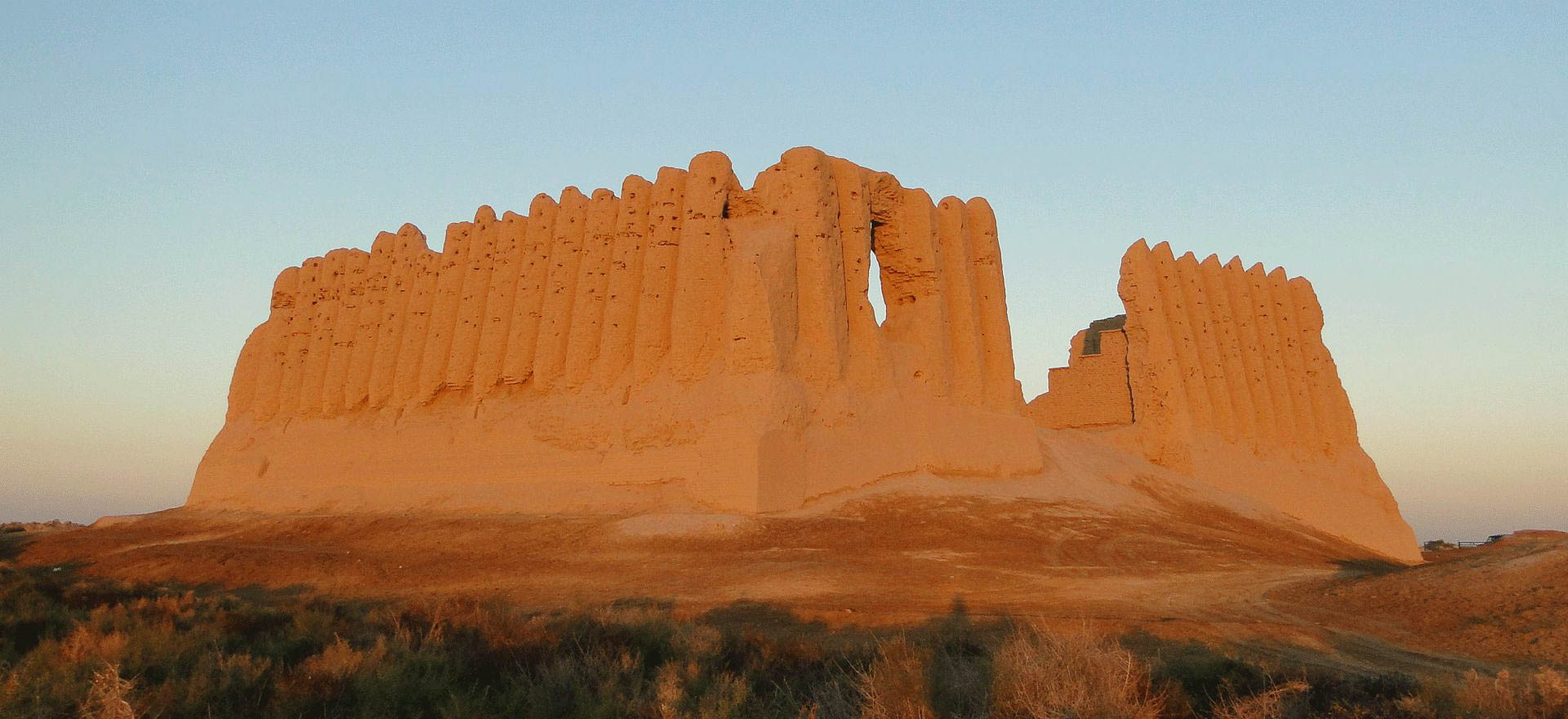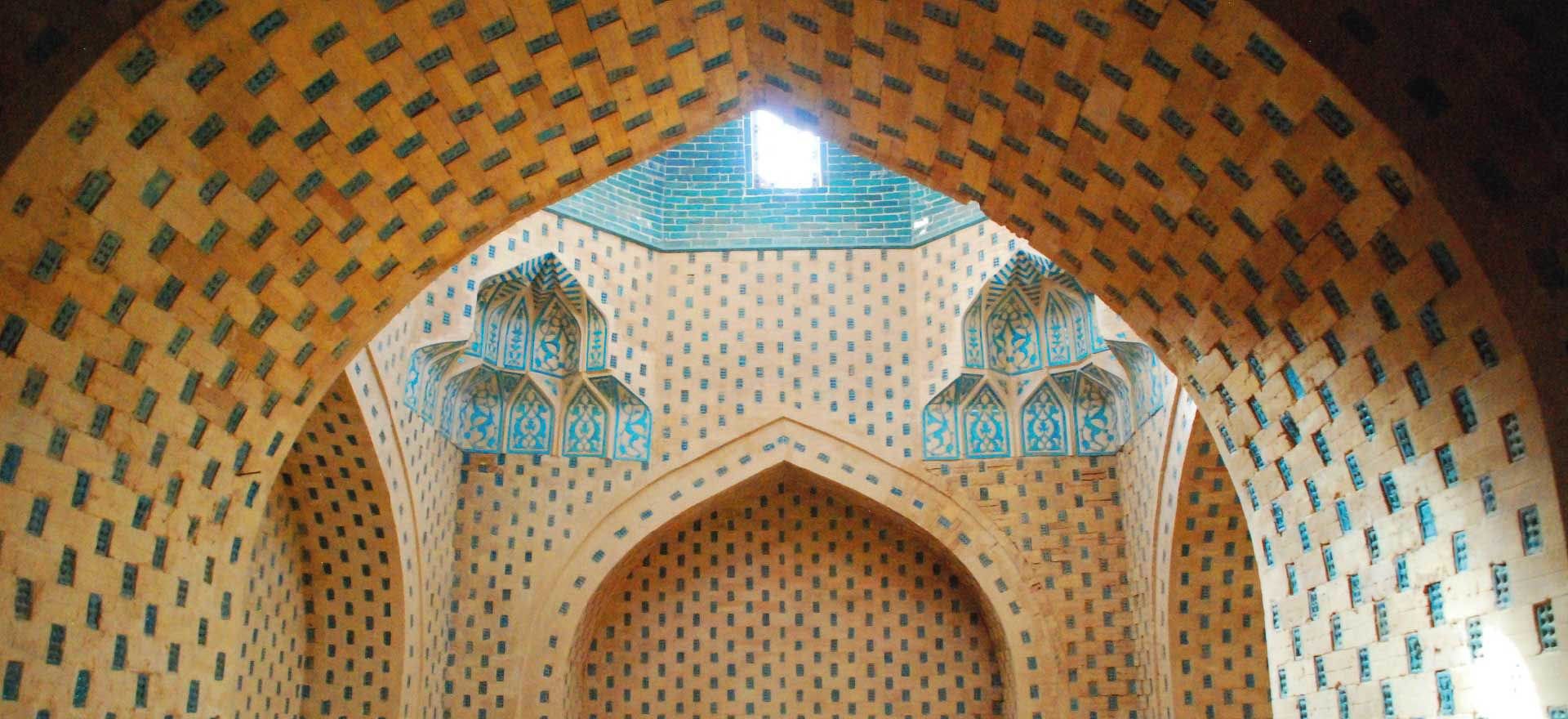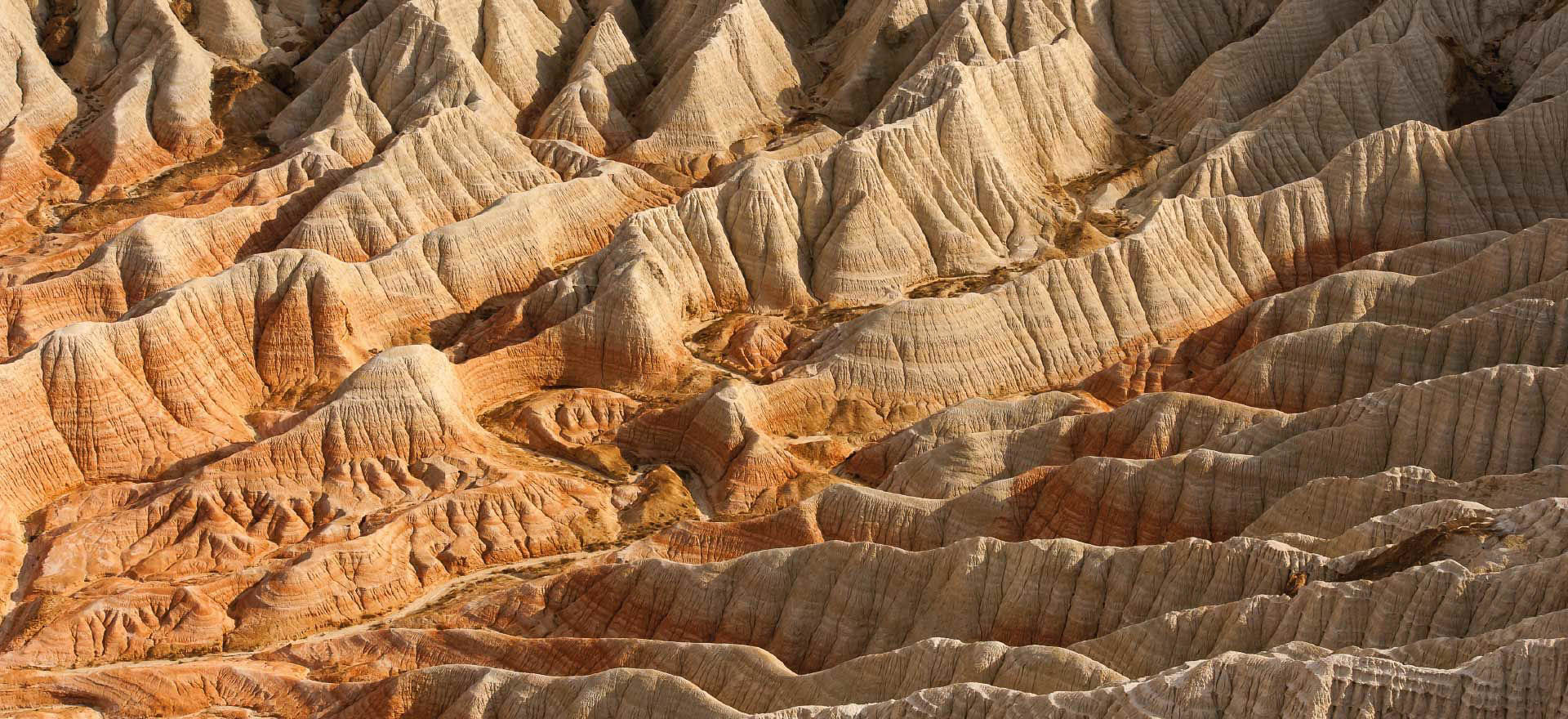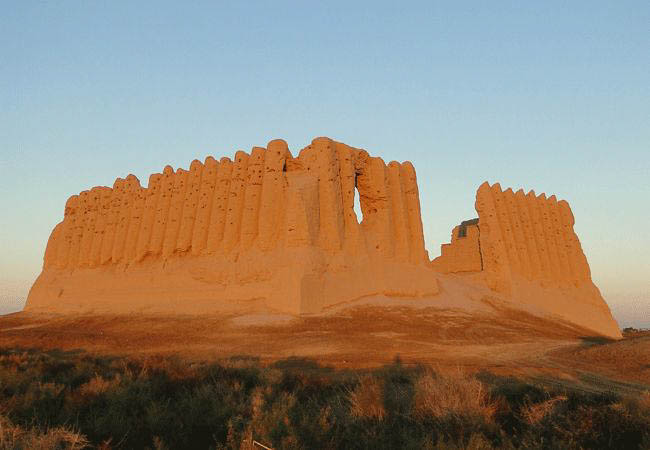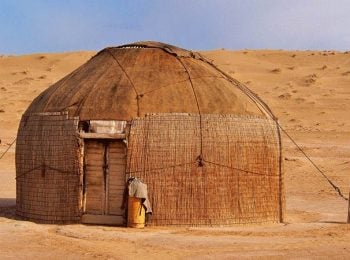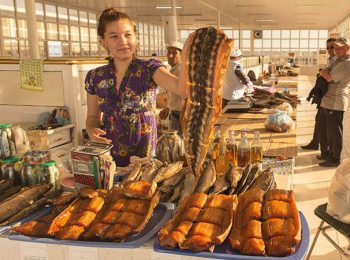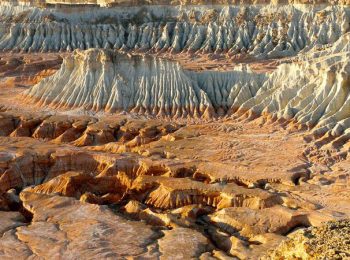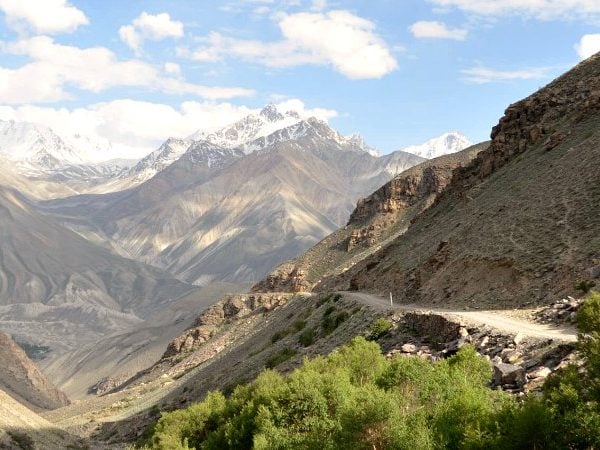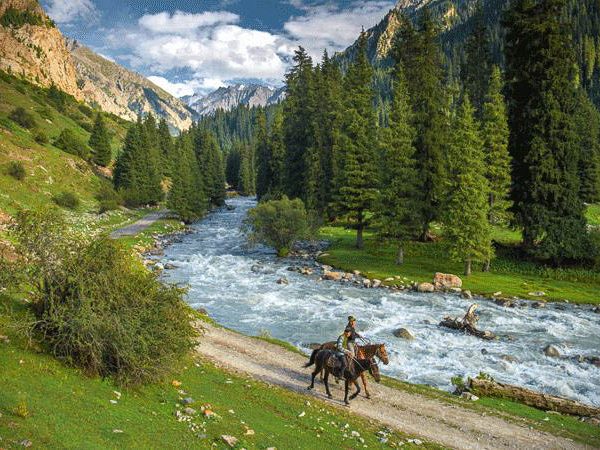Day 2 - Ashgabat
Spend today exploring Ashgabat. We visit the unusual monuments of the city including the Neutrality Arch and Independence Park. We also visit the excellent National Museum and private stables that are home to the renowned Ahal Tekke breed of horses, and head out to the Parthian fortress of Nisa, recognised by UNESCO for its cultural and historical importance. Overnight Sport Hotel or similar. (BLD)
Day 3 - Nohur - Dehistan
Today we visit the Sunday bazaar then head to the underground lake of Kowata, located deep within a cave. We then continue to the village of Nohur, home to the Nohurli people and a good introduction to the ancient ways of this part of the world. We then head to the remains of the ancient Silk Road settlement of Dehistan, where we camp for the night. (BLD)
Day 5 - Yangikala - Gozli-Ata
Drive to the stunning coloured canyons of Yangikala. It’s green, white and pink rocks make up some of Turkmenistan’s most stunning natural sites. From here we continue to the important pilgrimage site of Gozli-Ata, home to an important local shrine and mausoleum of the eponymous saint from the 14th century – we should see local pilgrims come to pay their respects and gain an insight into the spiritual traditions of the country. Overnight local pilgrim house. (BLD)
Please note that accommodation will be shared at the pilgrim house.
Day 6 - Balkanabat - Gyzylarbat
Drive to the city of Balkanabat with its interesting bazaar which we can explore. We also visit the Monument to the Pioneers and the interesting local museum with exhibits on nature, archaeology and ethnography. Continue to Gyzylarbat where we spend the night. Overnight local guesthouse. (BLD)
Day 7 - Ygdykala
We head off-road to the remains of the ancient Parthian fortress of Ygdykala, visiting the village of Melegoch along the way. Our route takes us through the Kara Kum desert, a foreboding and fascinating environment, where we spend the night. Overnight camping. (BLD)
Day 9 - Konye-Urgench - Asghabat
Drive to Dashoguz. We visit the UNESCO listed site of Konye Urgench, once an important Silk Road settlement and today home to some of Turkmenistan’s most impressive ancient monuments. Later we fly back to Ashgabat for the night. Overnight Sport Hotel or similar. (BLD)
Day 11 - Gonur Tepe
We visit the ancient Bronze Age site of Gonur Tepe, an important archaeological site which has helped researchers understand early human civilisation in Central Asia. Afterwards, we return to Mary. Overnight Margush Hotel or similar. (BLD)
Day 12 - Ashgabat
Return to Ashgabat, visiting the ruins of the 15th-century mosque at Anau on the way. Overnight Sport Hotel or similar. (B)
Day 13 - Ashgabat
Transfer to the airport for departure. (B)
What's included?
What's not included?
Visas
Almost everyone will require visas to enter some of the Central Asian ‘stans’. The requirements for these vary according to each different country, but many will require an invitation letter, which we can provide for you.
For Turkmenistan, we arrange for all our travellers to obtain visas on arrival. An invitation letter is required which we will provide.
Visa regulations in Central Asia are particularly fluid and so we recommend that you contact your nearest embassy, or us, for the most up to date information.
Health and vaccinations
We are not medically qualified and so we recommend that you speak to your doctor or nearest health professional for advice concerning recommended vaccinations. For more advice on vaccinations, you can also visit www.fitfortravel.nhs.uk.
If you have any physical limitations that might impact your ability to participate in the planned tour activities, it’s essential that you make us aware as soon as possible so that we can discuss this with you.
Insurance
It is a condition of joining our tours that you have suitable travel insurance in place, and we cannot accept travellers without insurance. All policies differ in terms of what they will cover, but as a minimum you need medical and health cover which will cover you for the whole time that you are away. Most policies will also include cancellation cover, which will cover you if an unforeseen circumstance obliges you to cancel your trip. We recommend that you obtain your insurance as soon as you book your trip.
Please note that government travel warnings often affect the validity of your travel insurance, and you should check this with your insurance company.
Arrival and departure taxes
There are no arrival or departure taxes applicable, but Turkmenistan will charge a $14 ‘immigration tax’, plus $2 bank fees, payable separately in US dollars when you enter.
In addition to this, Turkmenistan has recently introduced a ‘tourist tax’ of $2 per person per night. This must be paid directly to the hotel when you check out.
Money
The local currency in Turkmenistan is the manat. It’s not difficult to change money in the region – usually, the most convenient place will be a hotel but your guide will be able to point you in the right direction. There are also an increasing number of ATMs in larger towns. However, these are not always reliable and so it is best to think of them as a back up rather than a main means of obtaining money. The best currency to bring for exchange purposes is US dollars, and these should have issue dates of 2006 or later, otherwise they can be difficult to exchange.
Credit cards are accepted in larger hotels and better restaurants (usually in major cities only) but are not commonly accepted elsewhere.
Local conditions
When travelling to some of the destinations we offer, you need to bear in mind that things won’t always work here as we’re used to them working at home. Travelling in underdeveloped and untouristed destinations requires both patience and a sense of humour. There may be problems with infrastructure, attitudes may be different, and maintenance may not be as high a standard as we would always like, but this is very much part and parcel of travelling in such a place. We aim to resolve any issues as quickly as possible, and thank you for your patience.
Please note that the Turkmen authorities have recently introduced a new regulation, banning smoking in all public places. It is also prohibited to bring more than 40 cigarettes into the country.
Travel advice
We keep a very close eye on the travel advice issued by the UK Foreign and Commonwealth Office so that we can keep you up to date with any warnings. At the time of writing the FCO does not advise against travel to any of the parts of Turkmenistan that we visit on our tours.
This relates to advice from the British government – other nationalities need to check the stance of their own governments.
Please note that the information contained above is highly susceptible to change, and while we endeavour to keep up to date we recommend that you use this as a guide only. Should you have any questions, please don’t hesitate to contact us.

